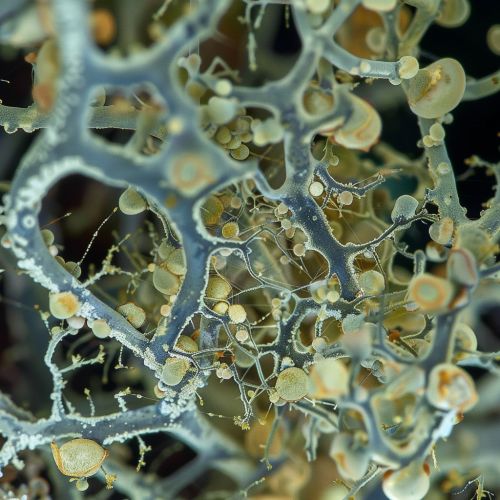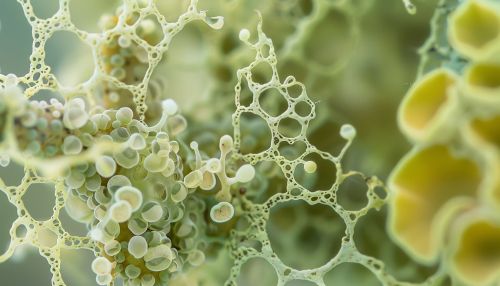Lichen
Introduction
Lichens are complex life forms that are a symbiotic partnership of two separate organisms, a fungus and an algae. They are an extremely diverse group, with about 20,000 known species, and they inhabit some of the most extreme environments on Earth.
Biology
Lichens are unique in the biological world, because they are the result of a symbiotic relationship between two different organisms: a fungus, which provides the structural form, and an algae or cyanobacteria, which provides the photosynthetic capability. The fungus and the algae are not just cohabiting; they are so closely intertwined that they function as a single organism. This type of symbiosis is called mutualism, because both partners benefit from the relationship.
Structure
The structure of a lichen is very different from that of either a solitary fungus or algae. The fungal partner forms a network of filaments, or hyphae, which make up the bulk of the lichen's structure. The algal cells are embedded within this structure, and are protected from the environment by the fungal hyphae. This structure gives lichens their characteristic appearance and allows them to survive in environments where neither fungi nor algae could survive alone.


Reproduction
Lichens reproduce in several ways. They can produce spores, which are released into the environment and can form a new lichen if they land in a suitable location. They can also reproduce asexually by breaking off small pieces of the lichen body, which can grow into a new lichen. Some lichens can even produce tiny structures called soredia, which contain both fungal and algal cells and can grow into a new lichen.
Ecology
Lichens play important roles in many ecosystems. They are often the first organisms to colonize bare rock, and they help to break down the rock and form soil. They also provide food for many animals, and they are a critical food source in arctic and alpine environments. Lichens can also absorb pollutants from the air, and they are often used as indicators of air quality.
Classification
The classification of lichens is complex and has been the subject of much debate. Traditionally, lichens were classified based on the fungal partner, because the fungus makes up the majority of the lichen's structure. However, recent genetic studies have shown that the algal partner can also be important in determining the characteristics of the lichen. As a result, the classification of lichens is currently in a state of flux.
Human Uses
Lichens have many uses for humans. They have been used as sources of dyes and perfumes, as food, and as medicine. They are also used in scientific research, particularly in studies of air pollution and climate change.
Conservation
Many lichen species are threatened by habitat loss, pollution, and climate change. Because lichens are so sensitive to air quality, they are often the first organisms to be affected by air pollution. Conservation efforts for lichens focus on protecting their habitats and reducing air pollution.
